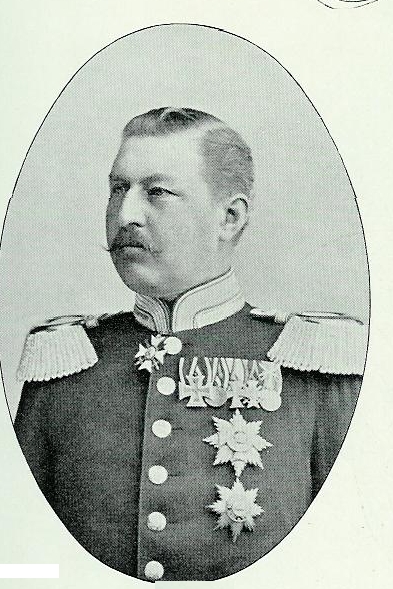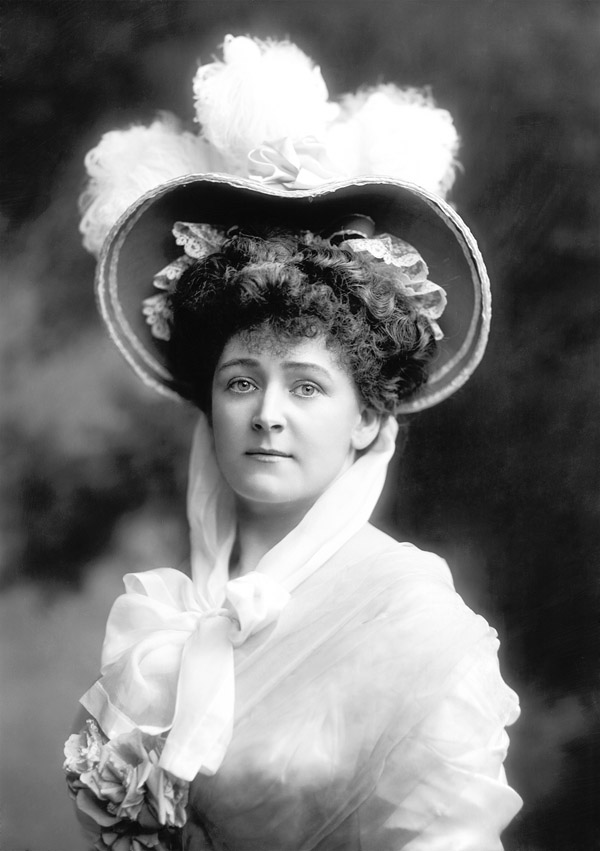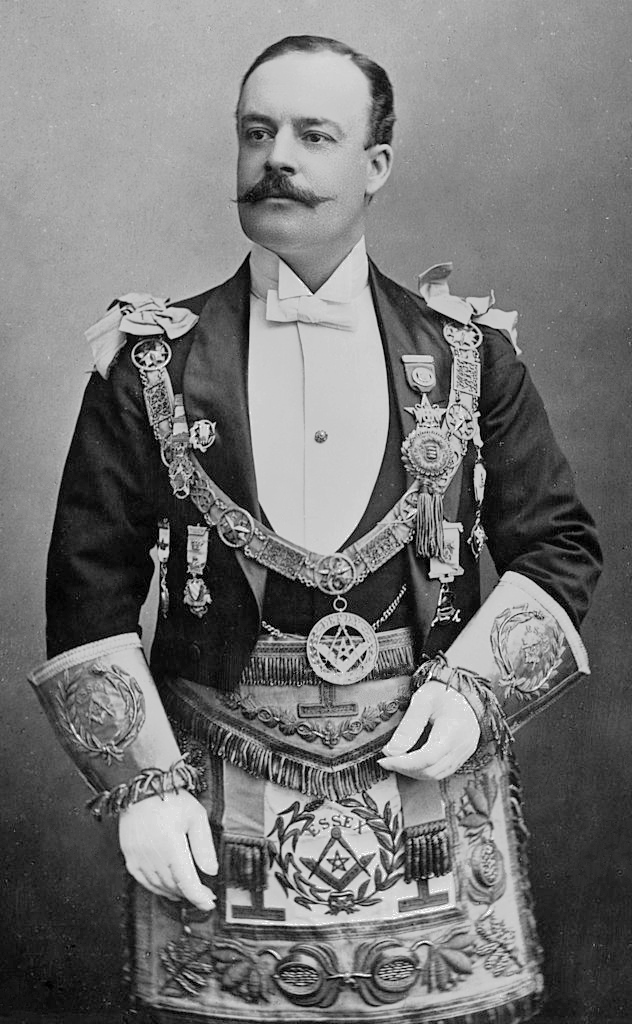by Susan Flantzer
Principality of Schwarzburg-Sondershausen: The County of Schwarzburg was a state of the Holy Roman Empire from 1195 to 1595, when it was partitioned into Schwarzburg-Rudolstadt and Schwarzburg-Sondershausen. The new counties remained in the Holy Roman Empire until its dissolution. In 1697, the County of Schwarzburg-Sondershausen was elevated to the Principality of Schwarzburg-Sondershausen. The County of Schwarzburg-Rudolstadt was elevated to the Principality of Schwarzburg-Rudolstadt in 1710.
The death of Karl Günther, Prince of Schwarzburg-Sondershausen without an heir in 1909 caused the Principalities of Schwarzburg-Rudolstadt and Schwarzburg-Sondershausen to be united under Günther Victor, Prince of Schwarzburg-Rudolstadt in a personal union. Following his succession in Sondershausen, Prince Günther Victor dropped the name Rudolstadt from his title and assumed the title Prince of Schwarzburg.
At the end of World War I, Prince Günther Victor was the last German prince to renounce his throne, abdicating on November 22, 1918. He made an agreement with the government that awarded him an annual pension and the right to use several of the family residences. The territory that encompassed the Principalities of Schwarzburg-Rudolstadt and Schwarzburg-Sondershausen is now located in the German state of Thuringia.
*********************
Credit – Wikipedia
Christian Wilhelm, Prince of Schwarzburg-Sondershausen was born on January 6, 1647, in Sondershausen, County of Schwarzburg-Sondershausen, now in the German state of Thuringia. He was the eldest of the five sons and the second of the ten children of Anton Günther I, Count of Schwarzburg-Sondershausen and Mary Magdalene of Zweibrücken-Birkenfeld.
Christian Wilhelm had nine siblings:
- Anna Dorothea (1645 – 1716), married Heinrich IV of Reuss-Greiz, had eight children
- Klare Juliane (1648 – 1739), unmarried
- Eleonore Sofie (1650 – 1718), unmarried, nun at the Protestant Quedlinburg Abbey
- Anton Günther II, Prince of Schwarzburg-Sondershausen (1653 – 1716), married Auguste Dorothea of Brunswick-Wolfenbüttel, no children
- Mary Magdalene (1655 -1727), unmarried
- Georg Friedrich (born and died 1657), died in infancy
- George Ernest (1658 – 1659), died in infancy
- Ludwig Günther (born and died 1660), died in infancy
- Johanne Elisabeth (1662 – 1720), unmarried

Christian Wilhelm’s brother Anton Gunther II; Credit – www,geni.com
Upon the death of their father Anton Günther I, Count of Schwarzburg-Sondershausen on August 19, 1666, Christian Wilhelm and his brother Anton Gunther II jointly inherited the County of Schwarzburg-Sondershausen. The two brothers ruled jointly until 1681 when they split the county into two parts. In 1697, the County of Schwarzburg-Sondershausen was elevated to the Principality of Schwarzburg-Sondershausen and both brothers became princes. When Anton Günther II died in 1716, Christian Wilhelm became the sole ruler of the Principality of Schwarzburg-Sondershausen.
In 1672, Christian Williams became engaged to Ludmilla Elisabeth of Schwarzburg-Rudolstadt, who had a talent for writing hymns. However, before the wedding could take place, Ludmilla Elisabeth and two of her sisters died during a measles epidemic.
On August 22, 1673, Christian Wilhelm married Antonie Sybille of Barby-Mühlingen (1641 – 1684), daughter of Count Albrecht Friedrich of Barby-Mühlingen and Sophie Ursula of Oldenburg. The couple had seven children:
- Anton Albrecht(1674 – 1680), died in childhood
- August Wilhelm (1676 – 1690), died in childhood
- Günther XLIII, Prince of Schwarzburg-Sondershausen (1678 – 1740), married Elisabeth Albertine of Anhalt-Bernburg, no children
- Magdalene Sophie (1680 – 1751), married Count Georg Albert von Schönburg-Hartenstein, had seven children
- Christiane Emilie (1681- 1751), married Adolf Friedrich II, Duke of Mecklenburg-Strelitz (third wife), had two children
- Luise Albertine (1682 – 1765), unmarried
- Antonie Sibylle (born and died 1684), died in infancy
Antonie Sybille died in 1684, aged 43, but her burial site is unknown. Later the same year, Christian Wilhelm married Wilhelmine Christiane of Saxe-Weimar (1658 – 1712), daughter of Johann Ernst II, Duke of Saxe-Weimar and Christine Elisabeth of Schleswig-Holstein-Sonderburg. Wilhelmine Christiane also predeceased her husband, dying at the age of 54, and her burial place is also unknown.
Christian Wilhelm and Wilhelmine Christiane had eight children:
- Johanna Auguste (1686 – 1703), died in childhood
- Christiane Wilhelmine (1688 – 1749), unmarried
- Heinrich XXXV, Prince of Schwarzburg-Sondershausen (1689 – 1758), unmarried
- August (1691 – 1750), married Charlotte Sophie of Anhalt-Bernburg, had six children including Christian Günther III, Prince of Schwarzburg-Sondershausen
- Henriette Ernestine (1692 – 1759), unmarried
- Rudolf (1695 – 1749), unmarried
- Wilhelm (1699 – 1762), unmarried
- Christian (1700 – 1749), married Sophie Christine Eberhardine of Anhalt-Bernburg-Schaumburg-Hoym, had five children
While Schwarzburg-Sondershausen was a County, the Electorate of Saxony claimed sovereignty over the County. This began to change when Schwarzburg-Sondershausen was raised to a Principality. During his reign, Christian Wilhelm increasingly freed himself from the dominance of the Electorate of Saxony.

Schloss Sondershausen; Credit – Wikipedia
Christian Wilhelm was responsible for the renovation of three wings of the Schloss Sondeshausen (link in German). The three Renaissance wings of the palace were altered and enlarged in the Baroque style. The Giant Hall extends over the entire second floor of the south wing and is decorated in the style of the high Baroque with 22 ceiling paintings featuring scenes from Ovid‘s “Metamorphoses” and 16 larger-than-life statues around the perimeter of the hall representing Greek gods. This website gives a 360-degree view of the Giant Hall: https://www.raumbild-ndh.de/referenzen/02-tourismus/sdh-schloss/riesensaal-tour/riesensaal.html
Christian Wilhelm, Prince of Schwarzburg-Sondershausen died on May 10, 1721, aged 74, in Sondershausen, Principality of Schwarzburg-Sondershausen. His burial site is unknown.
This article is the intellectual property of Unofficial Royalty and is NOT TO BE COPIED, EDITED, OR POSTED IN ANY FORM ON ANOTHER WEBSITE under any circumstances. It is permissible to use a link that directs to Unofficial Royalty.
Schwarzburg-Sondershausen Resources at Unofficial Royalty
- Unofficial Royalty: Principality of Schwarzburg-Sondershausen Index
- Unofficial Royalty: Royal Burial Sites of the Principality of Schwarzburg-Sondershausen
Works Cited
- De.wikipedia.org. 2020. Christian Wilhelm (Schwarzburg-Sondershausen). [online] Available at: <https://de.wikipedia.org/wiki/Christian_Wilhelm_(Schwarzburg-Sondershausen)> [Accessed 10 November 2020].
- De.wikipedia.org. 2020. Schloss Sondershausen. [online] Available at: <https://de.wikipedia.org/wiki/Schloss_Sondershausen> [Accessed 10 November 2020].
- En.wikipedia.org. 2020. Christian William I, Prince Of Schwarzburg-Sondershausen. [online] Available at: <https://en.wikipedia.org/wiki/Christian_William_I,_Prince_of_Schwarzburg-Sondershausen> [Accessed 10 November 2020].
- Flantzer, Susan, 2020. Royal Burial Sites Of The Principality Of Schwarzburg-Sondershausen. [online] Unofficial Royalty. Available at: <https://www.unofficialroyalty.com/royal-burial-sites/german-royal-burial-sites/royal-burial-sites-of-the-principality-of-schwarzburg-sondershausen/> [Accessed 9 November 2020].

































